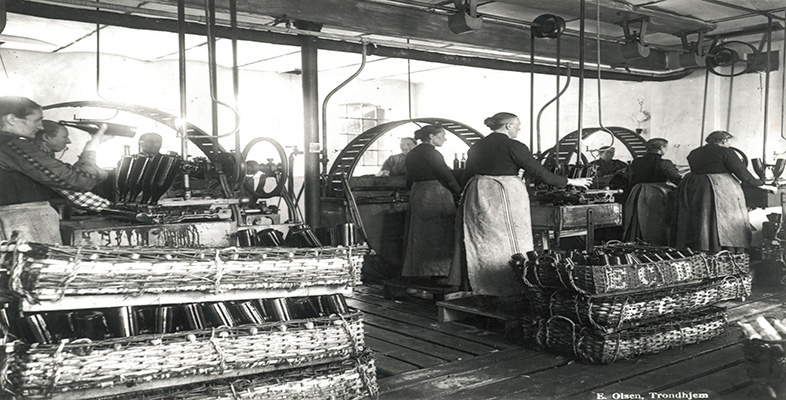Station 1: Potsdamer Platz
Click on the link below to view the U-Bahn map. You will find a hotspot for Potsdamer Platz station. Click on the hotspot and watch the film that is in the pop-up window (please note that this film is mute). When you have watched the film, click back on your browser to return to this page.
Potsdamer Platz [Tip: hold Ctrl and click a link to open it in a new tab. (Hide tip)]
Potsdamer Platz, the meeting point of five major roads making it one of Europe’s busiest traffic intersections, has often been held up as iconic of 1920s Berlin; though many of its physical indicators of ‘modernity’ in fact predated the First World War. For example, the most famous buildings associated with the Platz had been constructed in the late nineteenth century, including the magnificent Wertheim department store (1897), Café Josty (1880), and the food emporium, Haus Vaterland (1912). However, during the 1920s the use of these buildings came to be representative of Weimar social life and culture. Café Josty (which you saw at the end of the film) became an important meeting place for artists and intellectuals. Haus Vaterland underwent substantial renovations in 1928, and was transformed into a palace of entertainments, complete with illuminated dome. And in the early 1930s, a symbol of the modernist age, Erich Mendelsohn’s Columbus House, was added to complete the set.
Activity 3
The footage you have just seen includes scenes of not just Potsdamer Platz, but also some of the surrounding main thoroughfares.
Can you identify any indicators of modernity in these scenes that are particular to the interwar years?
Specimen answer
Ruttman’s Sinphonie is a celebration of the modern city, and it can be difficult to untangle those features in the film which are particular to the interwar years. However, I picked out two primary indicators. First, transport; specifically the appearance of cars on the city streets, and the problems that these new vehicles created for urban order. You might have noticed the policeman on the streets directing the traffic. Also, you might have noticed the continued presence of more traditional modes of transport, especially the large number of horses with carts attached. The second indicator I identified was the presence of women in the public sphere – not just the fact that there are quite a lot of women in the film walking the city streets, but that they do so unchaperoned and often with a sense of purpose. This perhaps suggests that they are on their way to work. I also took note of the fashions that many of these women were wearing, a contrast to images of women in the prewar period.
I hope you enjoyed exploring the city centre. Next, you will go to the station Onkel Toms Hütte. On arrival there, you will be joined by your tour guide, Matt Frei.
